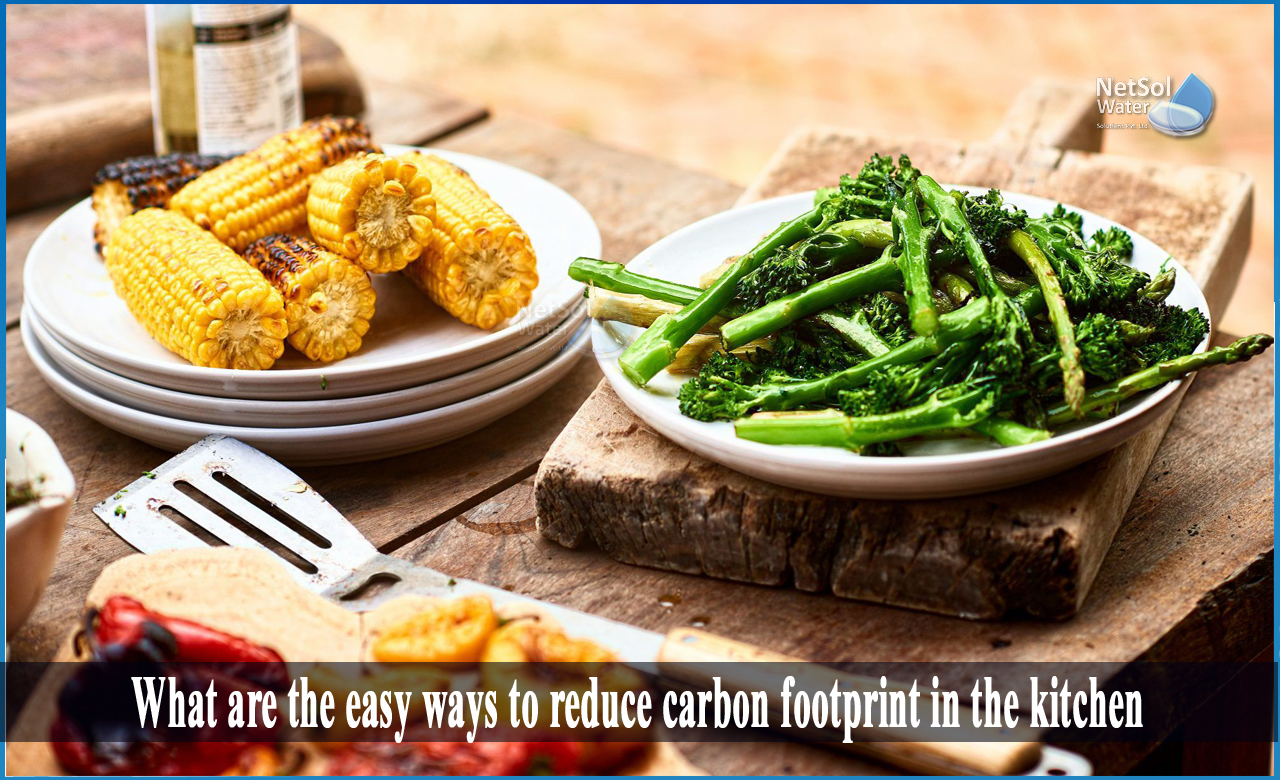What are the easy ways to reduce carbon footprint in the kitchen?
The kitchen's carbon footprint includes more than just the carbon dioxide you emit into the atmosphere, but, it also includes your contribution to all greenhouse gas emissions, such as methane and hydro fluorocarbon compounds (HFCs).
Easy ways to reduce carbon footprint in the kitchen
1. Reduce Food Waste
Food waste in India is at an all-time high, with about 2.2 million tonnes of edible food ending up in landfills each year. We're all guilty of waste, whether it's crumbs on our plates, forgotten sweets in the back of the cupboard, or meals left to spoil.More food in our bins equals more methane emitted into the environment (which has a warming potential up to 30X stronger than CO2). Reduced food waste is essential for slowing climate change.
Solutions for reducing food waste include:
- Purchasing food recycling equipment, such as the Food Recycler, to repurpose food waste and nurture your plants.
- Buying less and planning your purchases more carefully.
- Shopping locally for seasonal produce.
- Donating unused food to charitable organizations.
2. Cut back on plastic packaging
We're frequently advised to reduce, reuse, and recycle, but how rigorously do we follow this advice? Household kitchens are a hotspot for unmonitored waste, especially when it comes to the packaging of our items.
Every second, 20,000 plastic bottles are purchased, and the number of plastic individual’swastes away each year is enough to round the globe four times!Finding the right balance between keeping food fresh and reducing our carbon footprint is critical and thankfully, eliminating plastic from our grocery shopping is becoming easier.
To limit the amount of plastic in your kitchen, try:
- To avoid disposable bags, bring reusable shopping bags to the store.
- Purchasing a solid water bottle to avoid impulsive purchases of water.
- Purchasing a low-cost water filtering system to keep water fresh in your refrigerator.
- Looking for eco-friendly packaging solutions for items.
- Requesting paper bags instead of plastic bags from your grocery cashier.
3. Make use of the proper equipment
Energy waste is a major problem in kitchens all around the world. Thousands of individuals are guilty of using a pan that does not cover their entire hob or an oven that is not properly shut. While these seemingly innocuous activities may appear to be harmless, they can have a negative impact on global energy waste.
Here are some helpful hints for selecting the proper equipment:
- Purchase pans that cover the whole cooking ring, allowing less heat to escape.
- If your oven is leaking heat, adjust the door or purchase a replacement seal.
- To decrease energy loss, make sure your refrigerator and freezer doors are well-sealed.
- For long-lasting cookware, avoid plastic, wood, and teflon.
- Don't toss out your knives when they become dull; instead, invest in an excellent knife sharpener that will make them cut and slice like new again.
Conclusion
The carbon footprint is influenced by hundreds of lifestyle factors, such as what you eat and how you travel. While no carbon footprint calculation is perfect, these simple forecasts can help us understand how various behaviours affect the environment. To rescue the earth, our carbon footprint must be reduced and this begins from our own kitchen.
Where can you find the best Food Waste Recycler?
Netsol Water, based in Greater Noida, India, provides the best version of Food Waste Recyclers, converting food waste into organic matter that can be used to nourish your garden. The Food Waste Recycler dries, cuts and compresses food waste in a similar fashion to electronic composting, reducing methane emissions and completely removing odour.
If you'd like to learn more about how a Food Waste Recycler might help you transform your kitchenwaste, call on +91-9650608473 or send an email to enquiry@netsolwater.com and assist your company in becoming more environmentally friendly!



